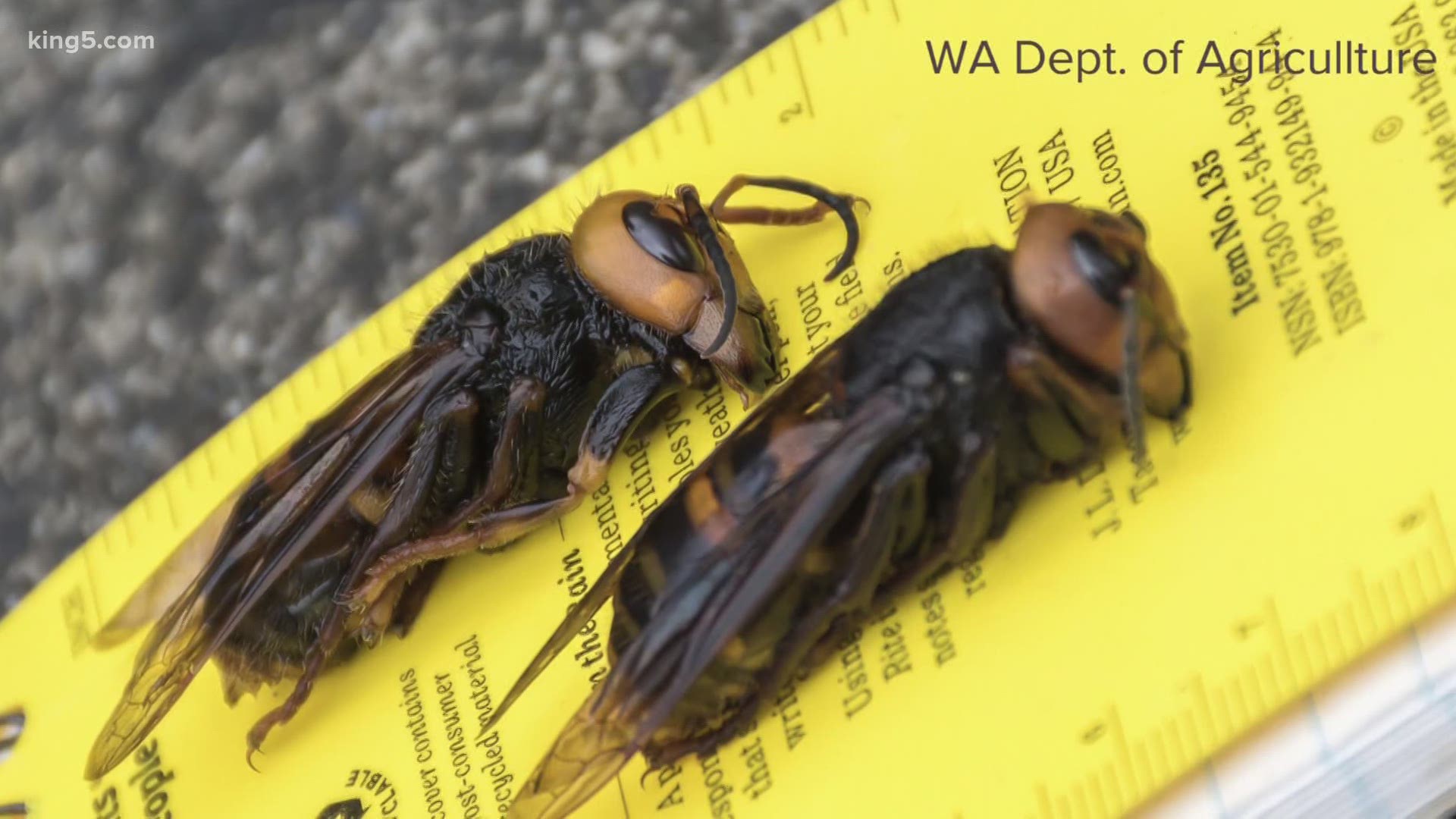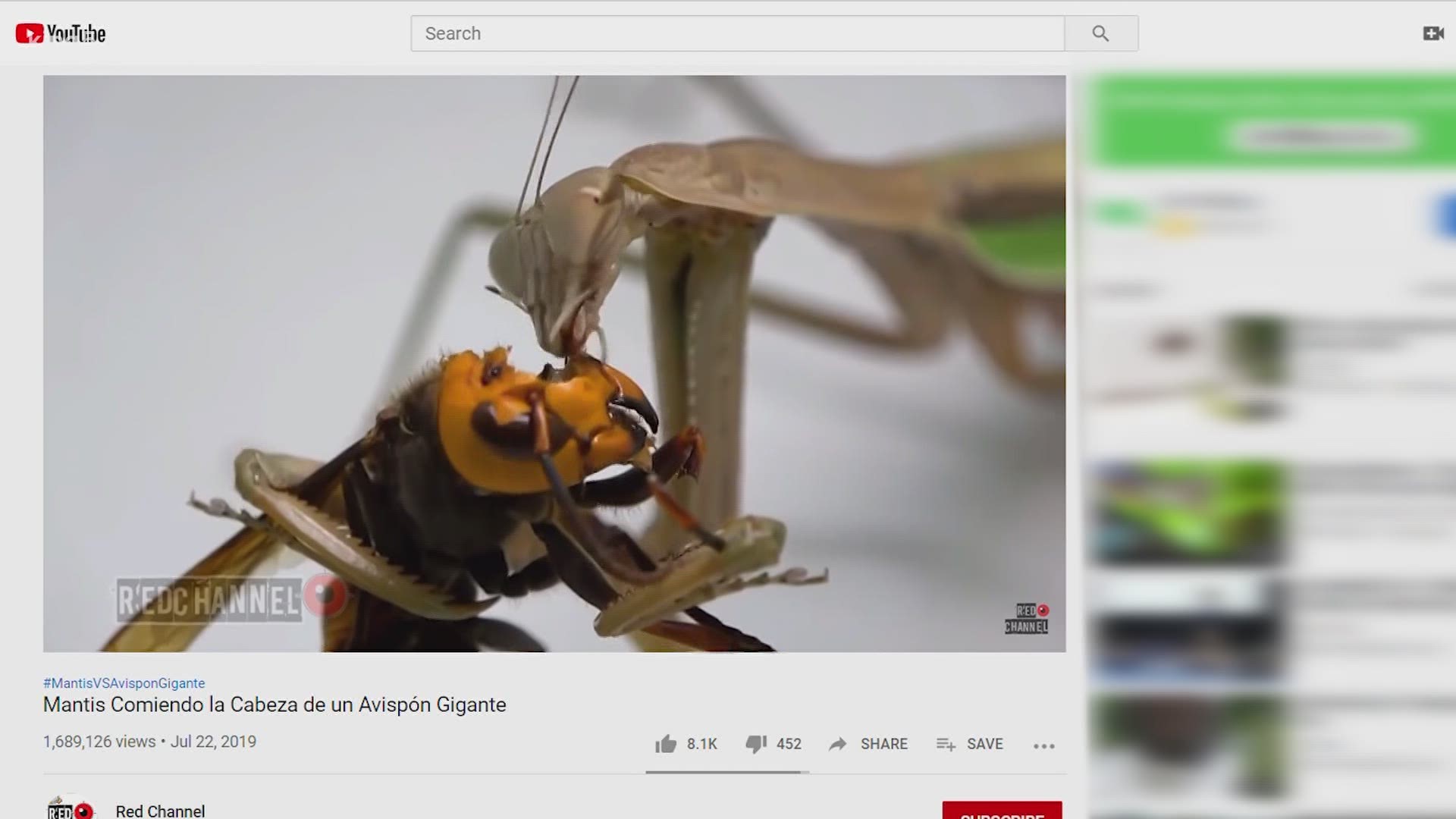WHATCOM COUNTY, Wash. — The buzz about Asian giant hornets in Washington might have died down, but the process to track them is still very much alive.
Over 2,000 potential sightings of the invastive hornets have been reported to the Washington State Department of Agriculture (WSDA) over the past few months.
Almost all of them turned out to be false reports.
“99.9% of the time the answer is no. People are learning a lot, not about Asian giant hornets, but about other insects that are out there,” said Karla Salp, WSDA Public Engagement Specialist.
The insects most commonly confused for Asian giant hornets are bald-faced hornets, yellow jackets, bumblebees and ten-lined beetles.
“Please don’t go out and proactively kill things because most of the time it’s not an Asian giant hornet and unfortunately we’ve had some people killing things like bumblebees that really play a beneficial role in the environment,” Salp said.
The last confirmed Washington sighting was in Bellingham on June 11, 2020.
“We are putting up about 600 traps in the Blaine area and Bellingham area where we’ve had those detections already.”
More than 1,300 volunteers made their own traps using orange juice to try to help capture the so-called 'murder hornet,' a name which scientists call misleading.
The WSDA hopes to catch an Asian giant hornet alive and track it back to the nest to eradicate the queen
But before they find one, researchers are experimenting with hornets native to the area to find the best method.
The experiments include tying strings around the insect to track where it goes -- or putting tiny tracking devices on them.
WSDA is also trying something brand new with help from scientists at the University of Washington.
“Another thing we’re working with the University of Washington on is that they have developed these really tiny cameras that you could potentially attach to the insect and follow them back that way,” Salp said.
While most of the reported sightings are not an Asian giant hornet, Salp said they still want people to take pictures and submit a report on the WSDA website.
“The citizen scientist trappings have allowed us to really expand where we’re monitoring throughout the state, which we would never be able to do on our own,” she said.
RELATED: Could praying mantises kill or control the Asian giant hornet population in Washington state?


